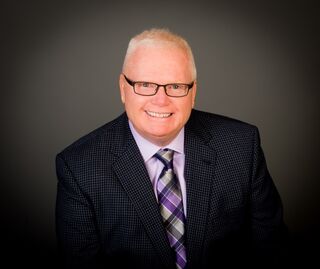Addiction
Behind the Scenes of an Intervention
Insights behind this lesser-known profession with practitioner Dan Lynch.
Posted June 7, 2022 Reviewed by Tyler Woods
Key points
- There are various models of addiction interventions.
- The goals for interventions are not always for the client to get into treatment.
- The family system is the most important component of an intervention.
There are many ideas as well as misconceptions about being an addiction interventionist. I sat down with Dan Lynch, a Board Registered Interventionist and Licensed Drug and Alcohol Counselor. Lynch is the founder and president of Lynch Wellness Professional Group in Norwell, Mass. He was willing to talk about his experience in the field, the changes he has witnessed through the years, and to clarify the true objectives of intervention.

Sarah Benton: What led you to become an interventionist?
Dan Lynch: I was inspired by one of my mentors John McPeake, Ph.D. whom I met while I was in treatment in 1983. After a couple of years working in the industry, I decided I wanted to become an addiction specialist and an interventionist. McPeake became my mentor and somewhat of a coach in helping me engage in this field. He used a Vernon Johnson model, which was the earlier concept of interventions by family, friends, and employers. He supported early interventions, and this was the model that I used in the early days of intervention services.
SB: Since you began your work, how has the intervention field changed?
DL: For the past 20 years, there have been a handful of different models of approach to intervention services. One is the ARISE model, it’s a model that’s been designed to really work with the family system. In this model, I heavily engage the family on the front end and then engage the identified patient. I like to think of this as an invitational model instead of a surprise model. Interventions are generally categorized into four main types: simple intervention, classical intervention, family systems intervention, and crisis intervention. The classical intervention is similar to the Johnson model and the ARISE model is more of a family systems intervention.
SB: What is the most challenging aspect to conducting interventions?
DL: Probably one of the most challenging aspects is the coordination of the team. Who is going to be on the team? I have to think about the participants and how will I be getting them together at the same time to conduct a pre-intervention consultation. Sometimes people are spread all over the country and it can be challenging to get them to the table at the same time. The other challenge is that once the team is in place, I have to educate the identified patient’s family and friends about addiction, mental health, and the reason why the intervention is necessary. During that process I often must intervene on the interveners (the group), to get them on the same page to convey a message of love and concern with conviction.
SB: How do you mentally prepare yourself to lead interventions?
DL: The way I prepare myself for an intervention is by utilizing a list of (24 items). This list is titled “What do we need to think about as we prepare for the intervention.” In addition to establishing these 24 items, I prepare myself the day before the intervention is set to take place. I work on self-care: exercise, eating well, and resting well the night before. While on my way to the intervention I pray for the family, the identified patient, and the strength for me to carry out this endeavor.
SB: How do you define success for an intervention?
DL: I consider every intervention that I perform a success. Whether the identified patient accepts help or not, the goal is to “plant a seed” with the family and the identified patient with hopes that the identified patient will accept help. The goal is also to have the family fully engaged in the intervention process. The ultimate objective is to get the identified patient to agree to a treatment plan immediately. However, if that is not the case, we continue the work with the family to “hold the line,” which includes implementing leverage, healthy boundaries, and to continue to convey the message of love and concern. If we, meaning myself and the family, follow the direction of the model in place there is a very good chance that the identified patient will accept help within 24-48 hours.
SB: Some people feel that a person needs to hit their own bottom in order to want to get sober. What are your thoughts on how interventions factor into this?
DL: The ultimate goal of an intervention is to prevent the identified patient from hitting a bottom. Whether it’s the loss of a job, a DUI, incarceration, or a decline in medical health, everyone’s bottom is different. In other words, some people may hit their bottom from an emotional standpoint because “they’re sick and tired of being sick and tired” and they have developed a soul sickness. If it is the goal to raise somebody’s bottom before they actually hit a lower bottom, then that can include intervening and providing some type of leverage or consequences that may result if the identified patient refuses help.
SB: What types of addiction treatment services have you found to be most effective for your clients?
DL: Once an assessment is completed with a client, the level of care is recommended and determined. Levels could range from just attending recovery meetings like “AA” or needing individual psychotherapy. Some individuals may need a psychological evaluation to rule in or rule out co-occurring disorders, which, in addition, helps to determine a level of care for the individual. Often it happens that by the time a family or client comes to me, it’s usually a case where someone needs more intensive treatment that may include an intensive outpatient program, case management, monitoring and accountability, and setting up support systems to help an identified patient begin to heal physically, mentally, and spiritually. In most cases, the majority of patients that come to me and our group initially require residential treatment. We have since found that providing case management for both the family and the identified patient before, during, and post-treatment is the most effective way of healing the individual and the family as a whole.


